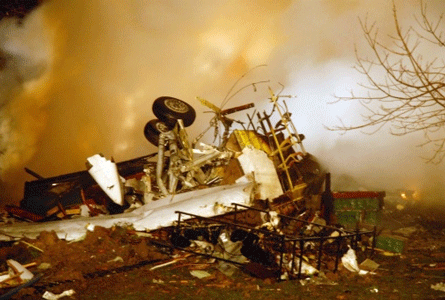Bombardier is the latest to contract out interiors
Kevin O'Toole/BIGGIN HILL
IN AN ERA OF standardisation, the cabin interior remains one of the few parts of an aircraft where the airline customer still has a chance make its mark.
For the customer, it may be a rare and welcome opportunity to stamp a brand on an aircraft. For the manufacturers, already under growing pressure to drive down lead-times and costs, it can be an expensive and distracting task. Add on top the growing complexity of cabin systems and it is little wonder that a growing band of manufacturers, especially in the regional-turboprop market, is looking hard at contracting out the finishing of interiors.
Bombardier's Regional Aircraft division has been one of the latest to join them. At the Paris air show in June, the Canadian manufacturer announced a deal with Hunting Aviation, under which it would hand over all responsibility for de Havilland Dash 8 interiors.
PROJECT MANAGEMENT
Such work is not new to Hunting. Its Airline Interiors division, based at Biggin Hill airport in Kent, UK, has been shipping completed interiors for the Saab 340 for more than a decade and, six years ago, it became a risk-sharing partner in the British Aerospace Jetstream J41 programme.
On both of these contracts, the company's involvement runs from work on the original design, through to building and shipping out of complete interior kits from Biggin Hill, ready for installation on the production line.
What makes the Dash 8 contract a new departure for Hunting is the nature of the deal. It sees the company going beyond being a contract supplier, or even a risk-sharing partner, to take on full project management. Essentially, Hunting becomes a single point of contact for product design, development and production.
"It takes the philosophy of providing complete interiors the next step forward," says Phil Francis, sales director at Biggin Hill.
He points out that one immediate benefit to Bombardier is that it no longer has to manage its previous network of at least 21 major interior-parts suppliers. Some of the subcontractors will continue to be used under the new contract, but it is Hunting rather than the aircraft manufacturer, which takes on the management role.
CUTTING COST AND LEAD TIMES
Perhaps more persuasively, Hunting has been able to promise savings in cost and cycle times. Under the existing arrangement, the interiors are fitted progressively during aircraft assembly, but, on Hunting's advice, they will now be installed from a single kit at the end of the line. Hunting estimates installation time at no more than seven days.
Similar cycle times have already been achieved on the Jetstream 41, at around four days for installation, and an eight-day cycle for the Saab 340B, including exterior painting at Hunting Aviation's centre in the UK's East Midlands.
Many of the benefits simply flow from the fact that a single company is taking charge of the whole integration, says Francis. "We have to work at solving the installation problems rather than simply exporting them to someone else," he adds, pointing to the example of Hunting's modular overhead bins, which have been designed to incorporate lighting, audio and air-conditioning into single connectable units.
"We're able to integrate everything together from colour co-ordination through to electronic systems," he says. For example, with the Dash 8 work, Hunting has also taken on responsibility for incorporating the Ultra Electronics active noise and vibration control into the aircraft.
With the need to include such features into a complete interior package, together with in-flight entertainment and communications systems, Hunting believes that the market will begin to consolidate around a handful of major players.
This thinking has been behind the heavy investment at the purpose-built Biggin Hill site over the past three years, designed to create a complete capability, which runs from research and testing through and customer support.
Gordon Williams, Hunting Aviation chairman, predicts that the number of serious manufacturers in the market could perhaps halve as consolidation takes hold.
With the Dash 8 contract, potentially valued at around $80 million, Hunting itself estimates that it now holds more than half of the available turboprop market.
Biggin Hill is already on course to put through around 60 or 70 shipsets this year as it climbs back from recession. When the Dash 8 work begins to feed through - the first kit is destined for a Mesa Airlines Dash 8-200 to be delivered in 1996 - the number should climb to about 110.
EXPANSION OPTIMISM
Williams believes that the expansion will continue, however, not ruling out a move towards the jet-airliner market. The Bombardier link could perhaps offer future opportunities to bid for the Canadair Regional Jet.
The technology is "readily transferrable" and Hunting has already cut its teeth in the market with components work, such as its cabin-class dividers for British Airways and others as well as the occasional complete interior. In 1992, the company produced an interior for the Bravia consortium's Westernised Tupolev Tu-204 .
"I'd be surprised if manufacturers around the world are not beginning to look at the possibilities," says Williams. He may be right.
Source: Flight International























